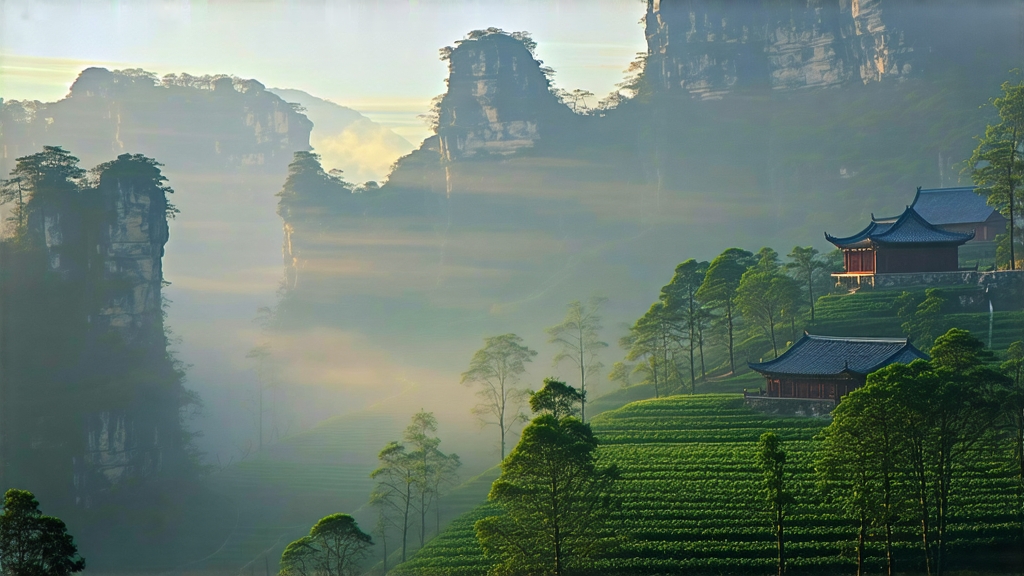
Ask most tea lovers to name a Chinese black tea and they will answer Keemun or perhaps Dian Hong; few realize that the very first black tea ever created was Lapsang Souchong, born in the cool gorges of the Wuyi Mountains in northern Fujian. Locals still call it “Zheng Shan Xiao Zhong” to distinguish the authentic, gorge-grown leaf from later imitations, yet the story of how a humble mountain tea became the prototype for every black tea on earth remains largely untold outside China. This article invites the international reader to walk the stone paths of Tongmu village, inhale the resinous smoke that once perfumed the holds of East-Indiamen, and learn why Lapsang Souchong is still revered by tea masters for its surprising delicacy beneath its assertive aroma.
Historical outline
The accepted chronology places the birth of Lapsang Souchong around 1568, late in the Ming dynasty, when soldiers bivouacked in Wuyi tea gardens interrupted the normal green-tea schedule. To save the harvest, farmers hastily dried the oxidizing leaves over pine fires; the resulting reddish liquor travelled north to the Mongolian steppe and west along the Tea-Horse Road, earning the name “black tea” (hong cha, literally “red tea”) because of the dark color of the dry leaf. By 1604 Dutch merchants had carried it to Amsterdam, where it fetched higher prices than green tea and launched the European fashion for “bohea,” a corruption of “Wuyi.” When the British East India Company later transplanted tea to India and Sri Lanka, they used Lapsang Souchong as the chemical template for black-tea manufacture, making this Fujian village the unwitting godparent of Assam, Ceylon, and Kenyan teas.
Terroir and cultivar
Authentic Zheng Shan Xiao Zhong must be grown inside the 60 km² core scenic zone of the Wuyi UNESCO World Heritage site, between 600 m and 1,200 m on weathered volcanic soils. The area’s perennial cloud cover slows photosynthesis, increasing amino acids that soften the finished tea. The traditional cultivar is Xiao Ye Zhong (“small-leaf species”), a semi-wild shrub with narrow, thick leaves that tolerate heavy smoke without losing sweetness. After 2005 a “non-smoke” or “fruit-style” version appeared to suit modern palates, but connoisseurs still prize the original pine-smoked leaf for its layered complexity.
Plucking standard
Only the tender two-and-a-half leaves and a bud are taken, usually between Qingming (early April) and the Grain Rain period, when the spring flush contains the highest ratio of polyphenols to cellulose. Experienced pickers snap the stem with a soft click, avoiding the woody third leaf that would introduce roughness in the cup.
Crafting the smoke: an eight-step choreography
- Withering: trays of fresh leaf are laid on bamboo racks in the second-floor loft of a Tongmu wooden house. A gentle fire of local Masson pine smoulders below, sending warm (35 °C) resin-laden air upward for 8–10 h; the leaf loses 60 % moisture and acquires a faint campfire note.
- Rolling: when the leaf feels leather-like, it is rolled for 45 min under light pressure to rupture cell walls, initiating oxidation.
- Fermentation: the twisted leaf is piled in pine-trunk troughs covered with wet cloths for 3–4 h at 26 °C, turning coppery brown as catechins convert to theaflavins.
- Pan-firing: quick 220 °C stir-frying for 3 min halts enzymatic activity and sets the color.
- Re-rolling: a tighter 30 min roll shapes the familiar long, wiry strip and extrudes sap that will later trap smoke.
- Smoking-drying: the critical signature phase. A brick-lined pit is topped with a bamboo sieve; pinewood logs rich in resin are burned until they glow, then damped to create thick white smoke that passes through the tea for 6–8 h at 80 °C. Craftspeople add fresh pine needles every 30 min to keep the smoke cool and sweet; too hot and the leaf turns acrid.
- Final drying: the tea is baked over charcoal embers for another 2 h to reduce moisture to